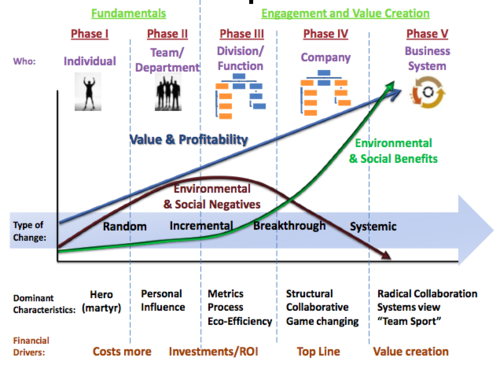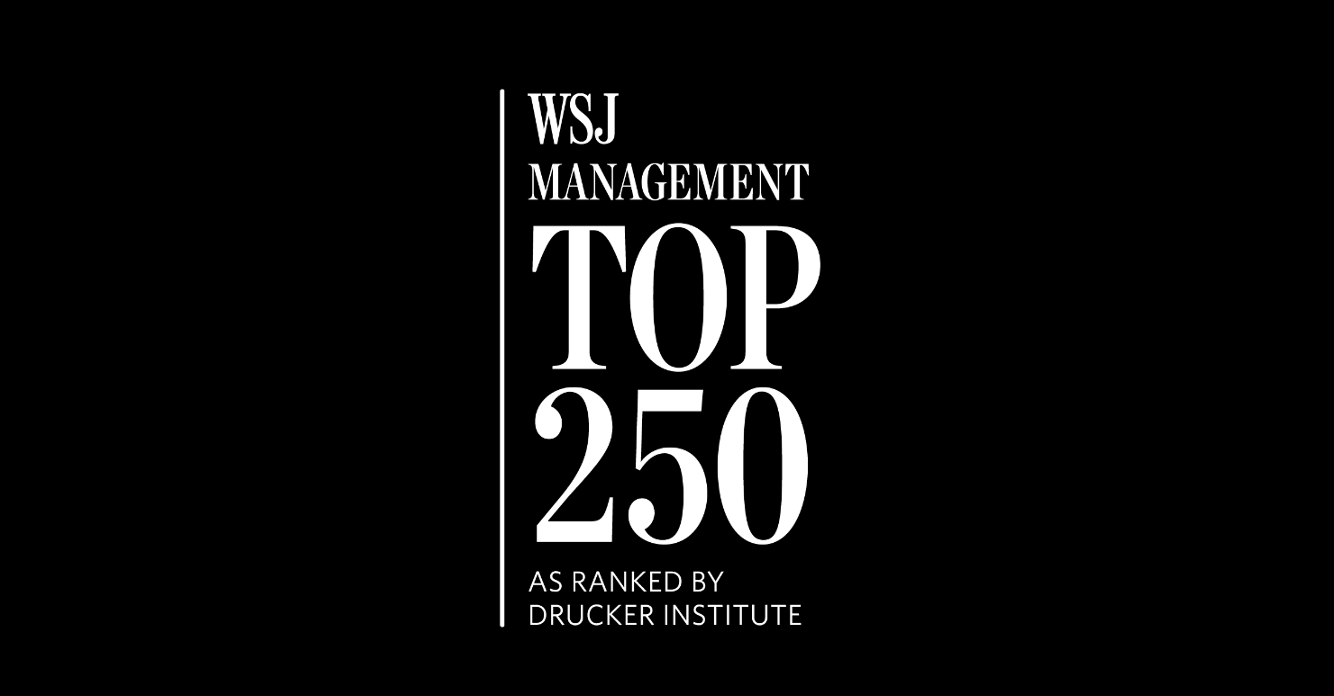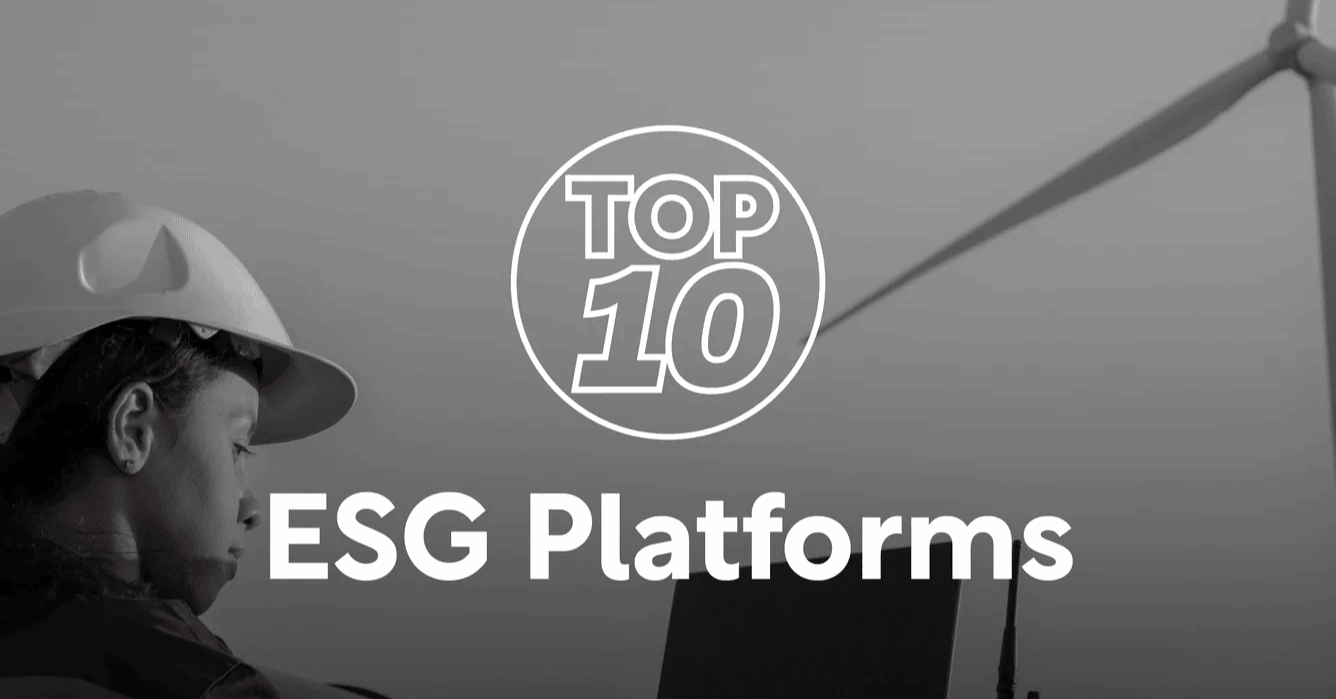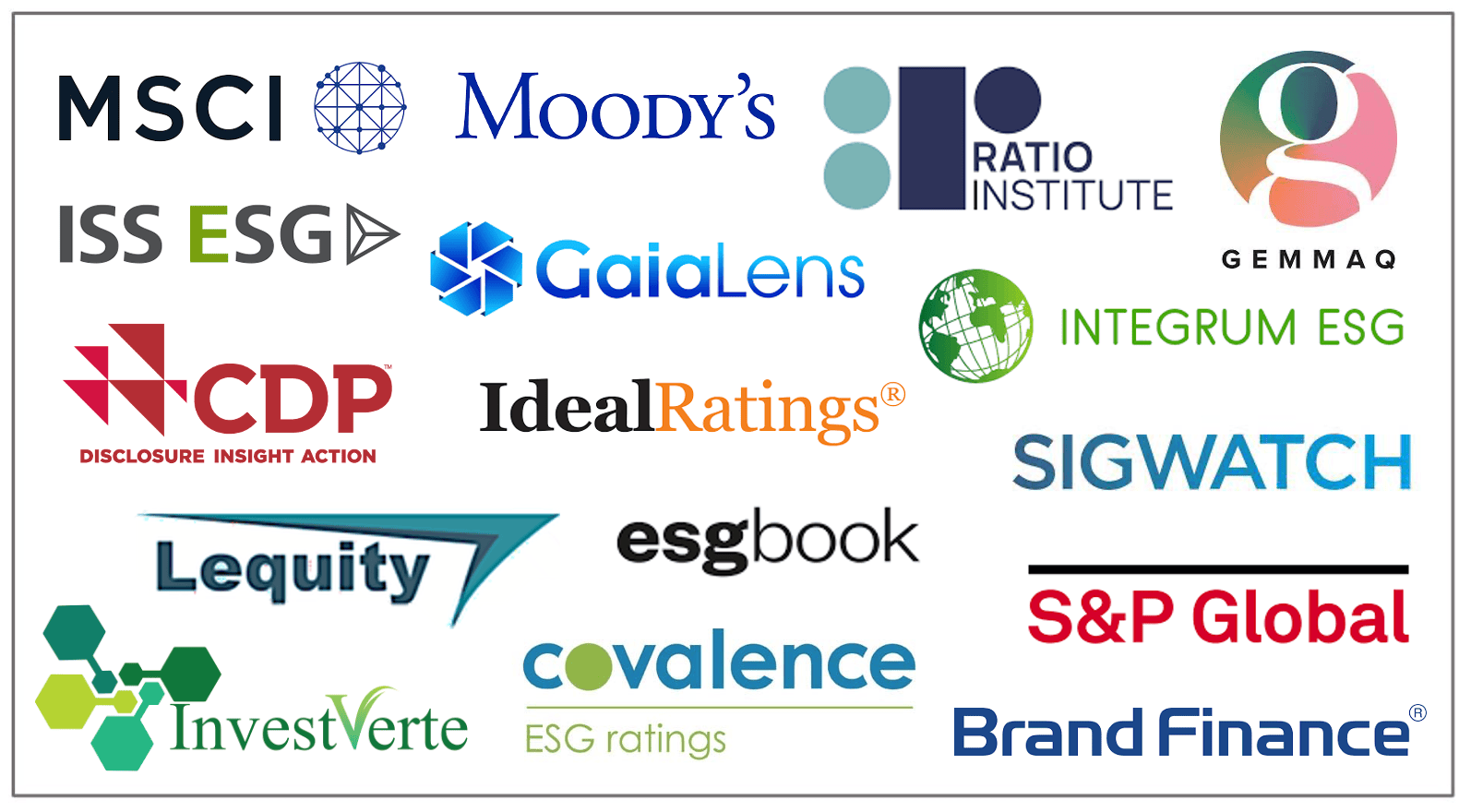By Guest Blogger, Kevin Hagen
Almost every company I have known to start down a formal path of sustainable business strategy has had the benefit of a passionate advocate for change. Sometime it’s a visionary CEO like Ray Anderson at Interface other times it’s been charismatic internal leaders like Betsy Blaisdell at Timberland or Auden Schendler at Aspen Skiing Company (to name two of many, many friends and colleagues in this category). In fact, there are so many examples that it’s common to associate “green” companies with this style of leadership. Although the charismatic phase is responsible for a lot of progress, in order to move up the matrix and deliver far bigger benefits, sooner or later the personality driven approach has to give way to a process driven program. That shift identifies stage III.
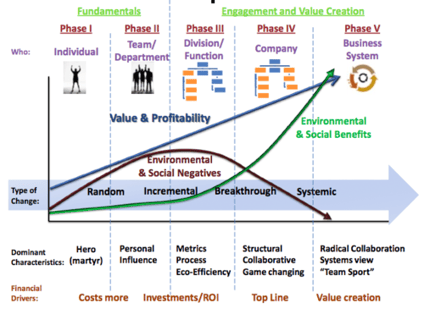 The Hagen-Wilhelm Change Matrix from Making Sustainability Stick by Kevin Wilhelm
The Hagen-Wilhelm Change Matrix from Making Sustainability Stick by Kevin Wilhelm
A quick recap of the Change matrix for context; Phase I is conventional thinking, it’s where we all start and where the majority of companies still are. Sustainability is confused with “green stuff” or even philanthropy by the organization and sometimes by the heartfelt folks who are acting as heroes (or martyrs) for change. Phase II is marked by that pivotal first step. The company goes from “random acts of greenness” to adopting a strategy or agenda for taking more responsibility for environmental and social impacts. If they are doing it right, they start to see opportunities and begin to enjoy the benefits such as reducing costs and risks. Stage III marks the next big transition.
Why move from personality to process?
The personality phase is great; lot’s of love, lot’s of attention and lot’s of personal fulfillment for making change. The company is proud of progress and is reaping business rewards. But to make progress you have to change. Why? Quite simply to get more done. No matter how much charisma one has, you can’t be everywhere, it’s not enough and it has a shelf life. All three of the leaders I mention in the opening made this shift and that’s one of the reasons they’re stars. They modeled the transition to organizational process for bigger gains, both inside and outside of their companies. They saw that sooner or later the charm offensive runs out of steam. In addition to leaving your program high and dry, you will leave people inside and outside of the company with the idea that it was just a fad – the bubble bursts. Reinforcing that view makes it really difficult for everyone to make progress. To avoid cratering, it’s really important to be driving the shift toward Phase III well before the infatuation runs out.
A critical factor in the shift was one of the “Keys to the Game” in Phase II – rigorous metrics. With a track record of success and measured financial impact you can show the correlation between success and the new metrics. Then pivot from correlation to causation – your metrics are not a happy coincidence, they are the key indicator (even cause) of success. Thus leaders can have confidence that pushing for the next level of sustainability goals will result in more business success.
Keys to the Game: Phase III:
1. Telling the internal story really well – credit where credit is due: By this time, folks are not surprised by success. In fact, they are taking pride in the fact that the company is more environmentally and socially responsible and they are thrilled that it’s delivering financial returns too. At this point it’s really important to do effective “after action reports” with leaders and influencers. Retell the story in terms of the process so that they understand that success wasn’t luck, it wasn’t one person’s passion and it wasn’t an isolated instance. Success came from following a process of change that can be taught to everyone, repeated often around the company and is worthy of further investment. Make sure that in public, the people involved get full credit and praise, while in private with company leaders the process is the hero.
2. Involve more stakeholders: At this stage you can get a lot done within the scope of authority of mid level managers within the organization, but don’t stop there. Make a point on some projects to cast a larger net for collaboration, more divisions, outside organizations like vendors and service providers and even NGOs if possible. For example if you’re working on energy efficiency, don’t stop with the facilities team. Involve divisions that might be able to make for a bigger win – like the office workers in the space where lights or HVAC is being changed. You can also involve the utility company, perhaps get them to contribute incentive dollars. And you could involve a non-profit such as Environmental Defense Fund’s Climate Corp fellows who can add a lot of horsepower to your efforts. All these stakeholders can make the project more successful, but the real up-side is that you’ll be developing organizational skills for collaborating – a critical skill required in Phase IV.
And that’s the hook for coming back for the next article in the Roadmap series – Phase IV – taking it to scale.
See Kevin's post introducing The Roadmap Series.
See The Roadmap Series: We all start at Stage I
See The Roadmap Series Phase II: The First Big Step
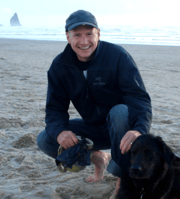 Kevin Hagen is a sustainable business advocate. For over a decade he has helped business be more successful by making the shift to more sustainable thinking. As a leader inside medium to large companies or as an external advisor Kevin helped design and implement successful sustainability strategies and programs. Most recently, Kevin lead Corporate Social Responsibility (CSR) strategy and implementation at REI, a leading outdoor retailer and the U.S.'s largest consumer co-op. Kevin's team delivered great results, received a lot of recognition and showed that a mission based company with nearly $2B in sales can reduce it's environmental footprint while growing profitably. See Kevin's blog where he shares ideas, news and offer resources and organizations that he thinks can help companies make progress toward sustainability while delivering bottom line benefits at the same time.
Kevin Hagen is a sustainable business advocate. For over a decade he has helped business be more successful by making the shift to more sustainable thinking. As a leader inside medium to large companies or as an external advisor Kevin helped design and implement successful sustainability strategies and programs. Most recently, Kevin lead Corporate Social Responsibility (CSR) strategy and implementation at REI, a leading outdoor retailer and the U.S.'s largest consumer co-op. Kevin's team delivered great results, received a lot of recognition and showed that a mission based company with nearly $2B in sales can reduce it's environmental footprint while growing profitably. See Kevin's blog where he shares ideas, news and offer resources and organizations that he thinks can help companies make progress toward sustainability while delivering bottom line benefits at the same time.
